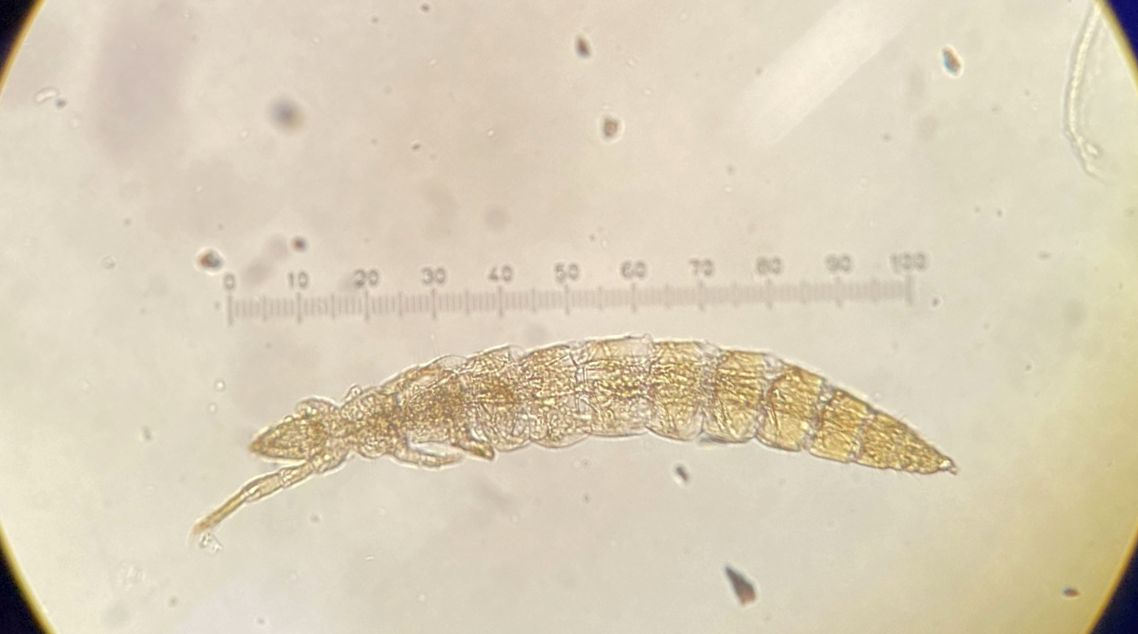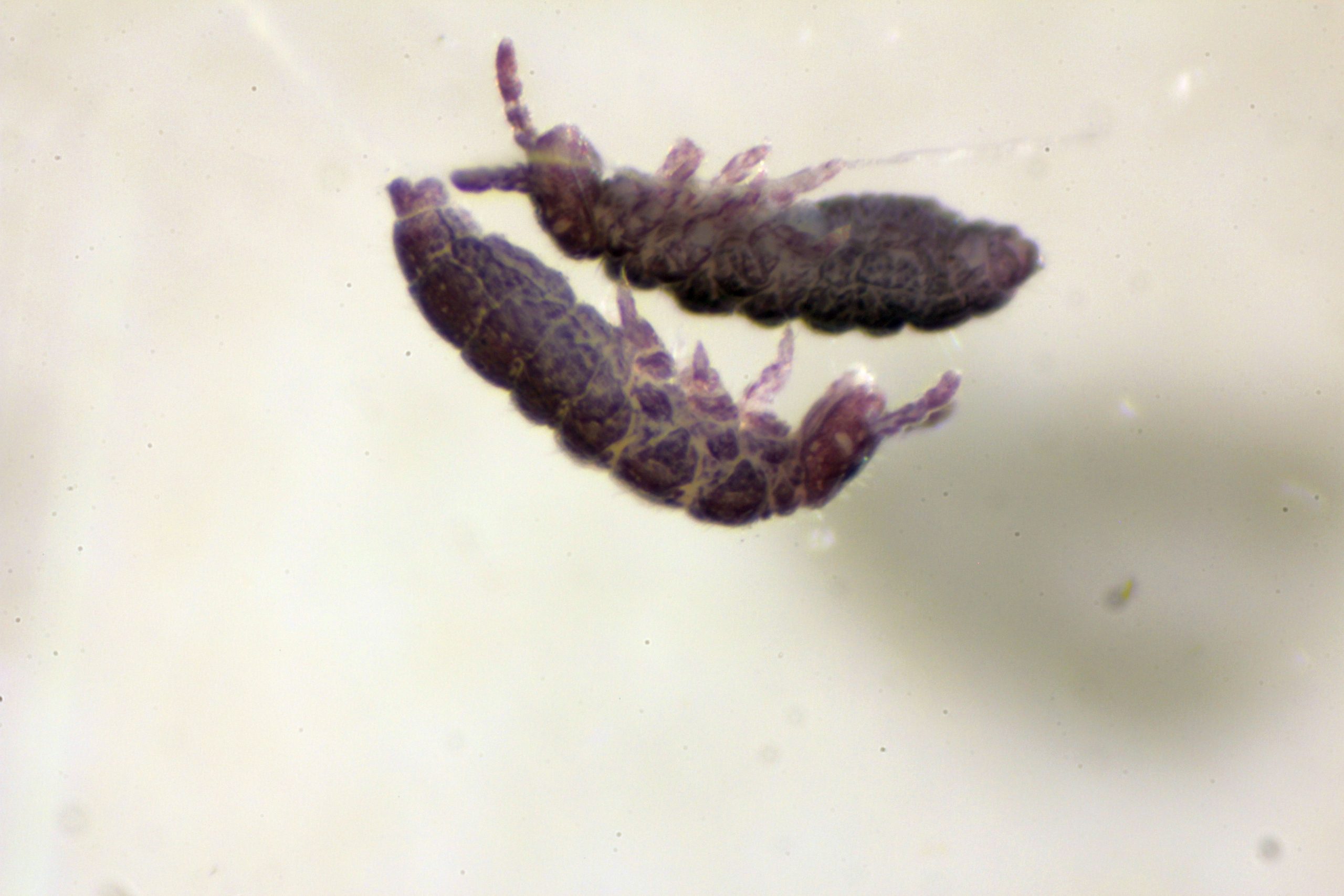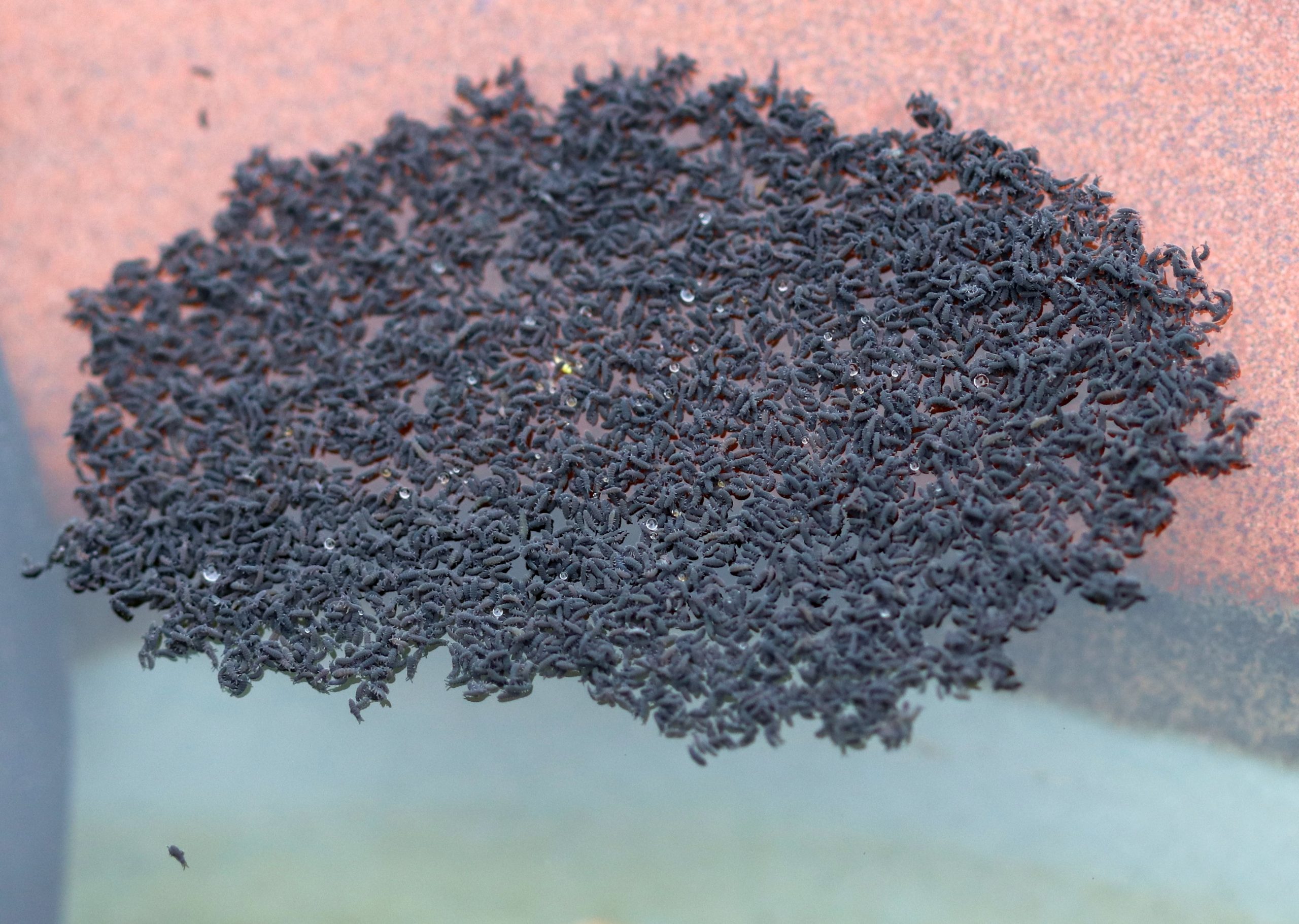31 Entognatha
The Entognatha
We’ll start with the Entognatha, a polyphyletic group. These animals are no longer considered part of the class Insecta, but are still included in the subphylum Hexapoda.
There are three classes within the Enognatha: Protura, Diplura, and Colllembola (also called springtails). All have mouthparts carried inside the head, in a pouch-like structure.
Protura
The class Protura (“Prot” = “first”, “ura” = “tail”), or coneheads, include approximately 500 species worldwide, with 20 species in three families in North America. The order was first discovered in 1907, and can easily be separated from leaf litter samples using Berlese funnels or Tullgren funnels (let me know if you would like to try collecting Protura). They are quite common, and a survey in California found ~4000/m2. All are less than 2.5 mm. They lack eyes, antennae, cerci and tracheae. Their legs have five segments, with one-segmented tarsi. The forelegs are enlarged, and used as antennae. The mouthparts are styliform, and used for sucking. There may be limb-like appendages on the first 3 abdominal segments, with terminal vesicles on the first pair.
One final point of interest about the Protura: they show anamorphic development. If you don’t remember this term from Invertebrate Zoology, it means that the animal adds a body segment at each moult.
In BC, we have 2 of 3 families present in North America. There is one slide of a local species available for identification to order.

Diplura
The second class we cover in the Entognatha is the Diplura (“diplos” = “double”, “ura” = “tail”). There are about 800 species of Diplura worldwide, with 65 species in four families known from North America. They can be locally common, but are small and prefer damp areas such as leaf litter. They lack eyes, but have chewing mouthparts, and well-developed antennae and cerci. The cerci are autotomizing: again, if you don’t remember that term from Invertebrate Zoology, it means that the cerci can be lost voluntarily to help the animal avoid predators.
Diplura have an interesting courtship. Once a male has found a female, he will leave a spermatophore, or a packet of sperm, on the ground. She will then fertilize herself using the sperm in the spermatophore.
There is one slide of a local species available for identification to order.

Collembola
Among the Entognatha, you are most likely to be familiar with, or at least to have seen, members of the class Collembola (“coll” = “glue”, “embolon” = “peg”), the springtails. There are well over 6000 species of springtails worldwide, with at least 675 species in North America and 541 on the Canadian checklist. They can be found from the Arctic to Antarctica, and often occur at high densities.
Springtails have chewing mouthparts, antennae with four to five segments, and a one-segmented tarsus. The tarsus may also be fused with the tibia, forming a tibiotarsus. They also have a small eye patch, similar to the stemmata you will encounter later in the course in some larval insects. They do not have cerci, and some lack tracheae. There are six abdominal segments. Springtails have an eversible vesicle, called the collophore, which functions in osmoregulation, water absorption, and (possibly) adhesion to the substrate. The name “springtails” comes from a structure that some Collembola have on their abdomens. There can be a forked structure, hinged to the tip of the abdomen, called a furcula. The furcula is tucked into a small structure further forward on the ventral surface of the abdomen, called the tenaculum or reticulum. When the animal is disturbed, the furcula can be released with considerable force, propelling the springtail off the substrate. Not all springtails have a furcula.
Fertilization occurs via a spermatophore deposited on the ground. In this order, though, the antennae in the males of some species are prehensile. The male can use them to hold the female and lead her to the spermatophore.
Ecologically, springtails are very important in soil function. Most feed on organic matter, helping with fragmentation and decomposition. A few species can even be considered pests, e.g. in greenhouse and nursery settings. Some are also predaceous, while others are herbivorous. “Snow fleas” are often encountered in the early spring in Prince George, feeding on algae and pollen on the snow surface. They are noticeable because, as with many springtail species, their bodies are covered in opaque scales, causing them to look yellow, purple, or blue against the snow.
Some of our local species are shown below. Note that the class Collembola is divided into two subclasses, the Arthropleona and the Symphypleona (globular springtails). Also, remember that not all springtails have an evident furcula!






Feedback/Errata